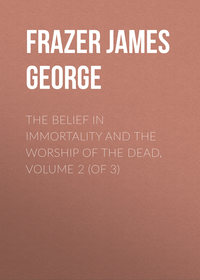The Golden Bough: A Study in Magic and Religion (Third Edition, Vol. 09 of 12)
 полная версия
полная версияThe Golden Bough: A Study in Magic and Religion (Third Edition, Vol. 09 of 12)
Язык: Английский
Год издания: 2017
Добавлена:
Настройки чтения
Размер шрифта
Высота строк
Поля








